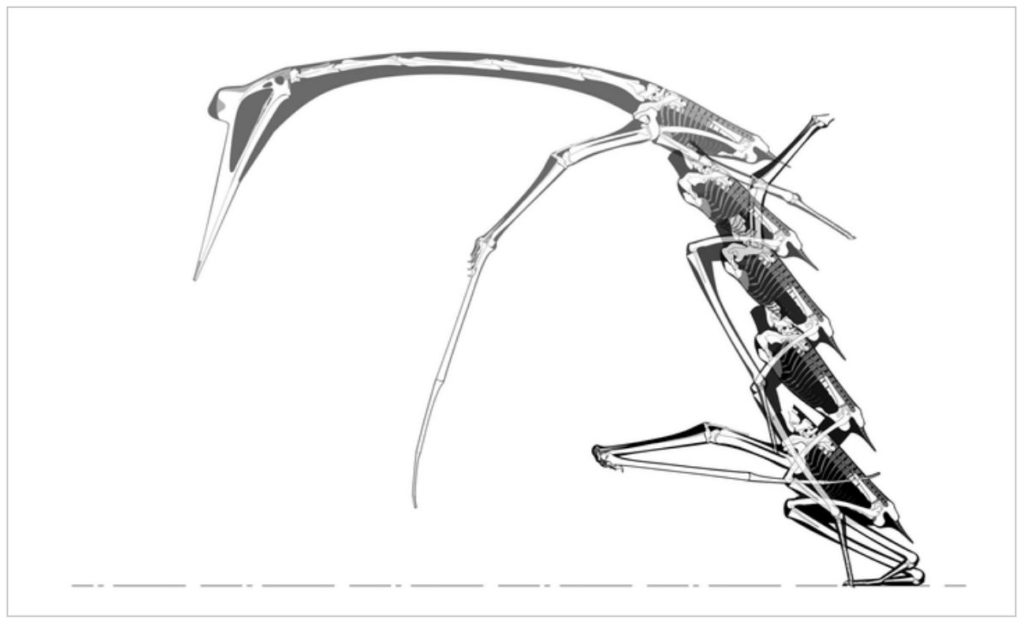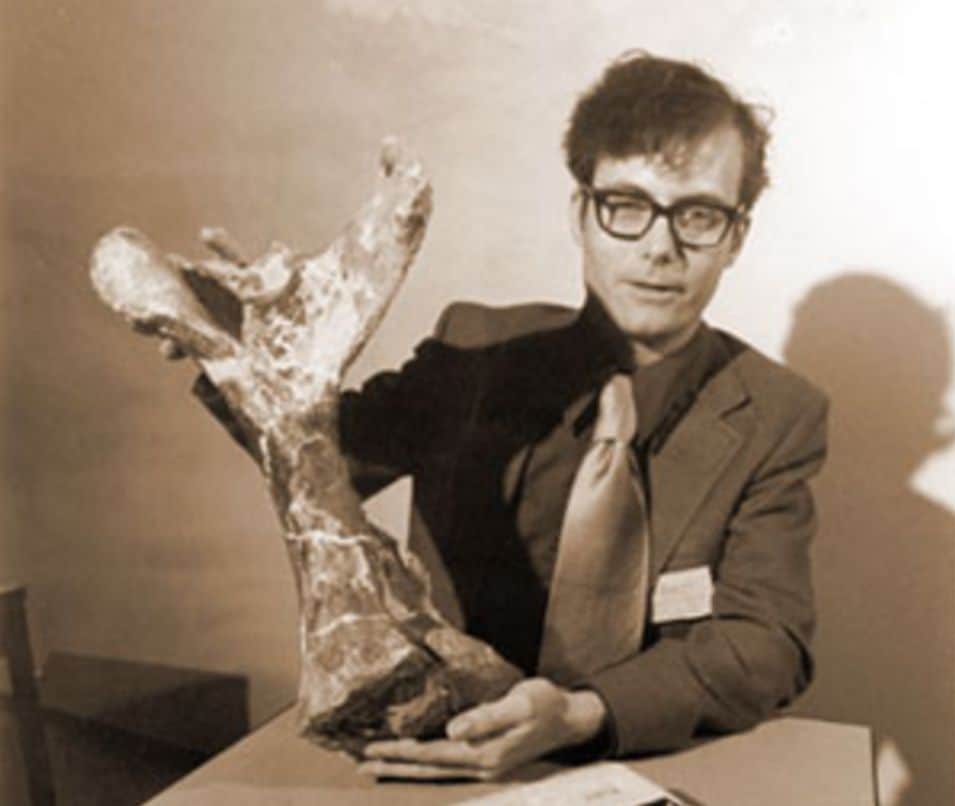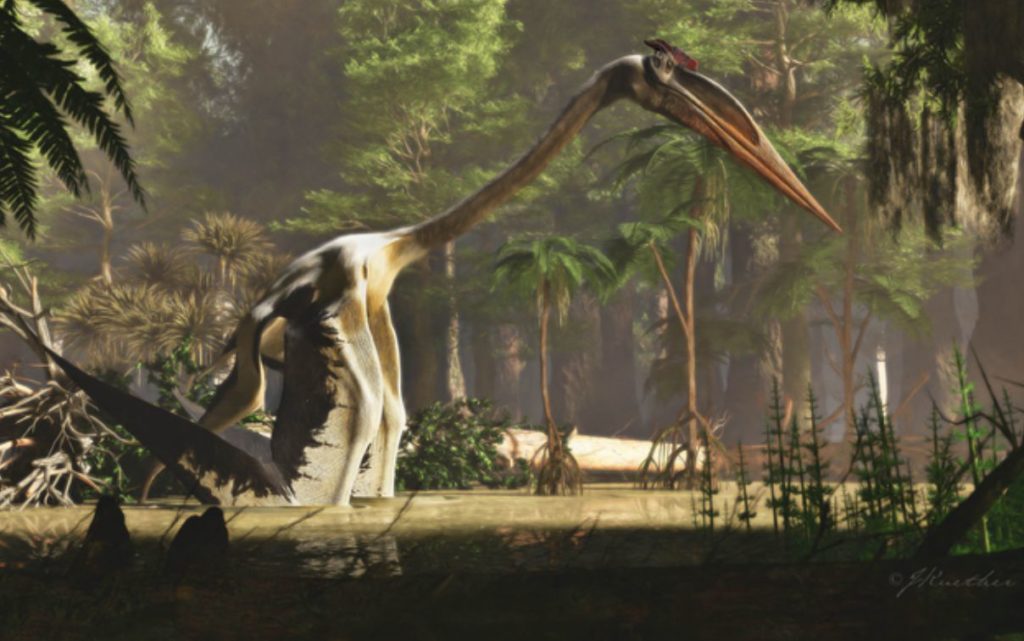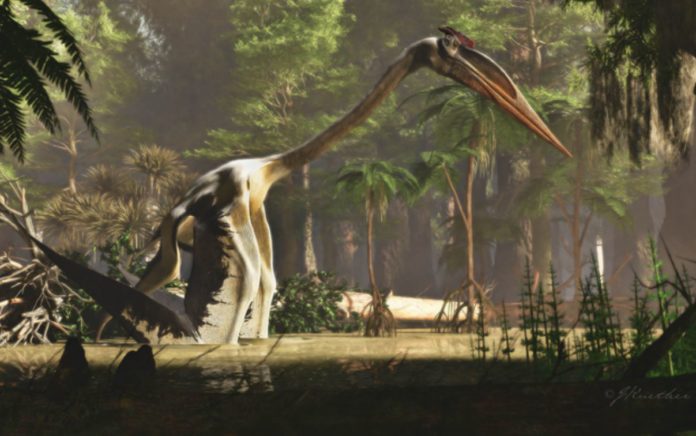The giant pterosaur Quetzalcoatlus has wings that spread more than 40 feet. This makes it the largest known flying animal.
So far, we know only a few fossilized bones from West Texas. It’s been hard to figure out how a huge animal could fly.
Some believe it swung forward on its wingtips like a vampire bat. Or that it gained speed by flapping its wings like an albatross. Or that it never flew at all.
According to fresh studies, the gigantic beast most likely jumped, leaping at least 8 feet into the air before lifting off with its wings swept.
The discovery is part of the most extensive study of the pterosaur to date, and is one of many to come from a new collection of Quetzalcoatlus research published on December 8 by the Society of Vertebrate Paleontology.
The gigantic “Texas Pterosaur,” shown in movies, comic cartoons, and hanged from museum ceilings, has been a media mainstay since it was found in Big Bend National Park in 1971 by Douglas Lawson, then a 22-year-old geology graduate student at The University of Texas at Austin.
However, science has not kept up with the popular image of the pterosaur. Aside from Lawson’s early descriptions of the fossils, very no scientific research based on actual examination of the bones has been published.
According to Matthew Brown, head of The University of Texas at Austin’s Vertebrate Paleontology Collections at the Jackson School of Geosciences and co-editor of the collection, this new research collection — a monograph made consisting of an introduction and five investigations – helps to address that.
“This is the first time that we have had any kind of comprehensive study,” said Brown.
“Even though Quetzalcoatlus has been known for 50 years, it has been poorly known.”
All known Quetzalcoatlus fossils are housed in the UT collections. The study included a detailed examination of all proven and suspected Quetzalcoatlus bones, as well as other pterosaur fossils discovered in Big Bend. This resulted in the discovery of two new pterosaur species, including a new, smaller species of Quetzalcoatlus with a wingspan of 18-to-20 feet.
Brian Andres, a postdoctoral researcher at the University of Sheffield who began studying Quetzalcoatlus while a student at the Jackson School, did the analysis and named the new species Quetzalcoatlus lawsoni in honor of Lawson.
Whereas the larger species are known from only a few dozen bones, the smaller species has hundreds of remains. This gave scientists enough material to recreate a virtually complete skeleton of the smaller species and analyze how it flew and moved. They then applied what they had learned to their larger cousin.
Kevin Padian, an emeritus professor and emeritus curator at the University of California, Berkeley, and co-editor of the research collection, led the biomechanics research.
“Pterosaurs have huge breastbones, which is where the flight muscles attach, so there is no doubt that they were terrific flyers,” he said.

Both Quetzalcoatlus species lived in Big Bend some 70 million years ago, when the region was an evergreen forest rather than the desert it is today. According to Thomas Lehman, who began his studies as a doctorate student at the Jackson School and is now a professor at Texas Tech University, everyone maintained a separate lifestyle.
Lehman determined that the larger Quetzalcoatlus may have lived like today’s herons, hunting alone in rivers and streams, by evaluating the geological setting in which the fossils were discovered. Smaller species, on the other hand, appeared to congregate in lakes – perhaps year-round or seasonally – to mate, with at least 30 individuals discovered at a single fossil site.
Researchers and illustrators have shown Quetzalcoatlus as a skimmer, forager, and scavenger over the years. Lehman describes Quetzalcoatlus as a prober that sifted for crabs, worms, and clams from river bottoms and lakebeds with its long, toothless jaws.

Wann Langston, Jr., the former director of the UT Vertebrate Paleontology Collections, spent decades studying Quetzalcoatlus. However, he was unable to publish the majority of his results before his death in 2013. Langston is named as a co-author on two of the papers to honor his efforts.
The science described in the monograph, according to Darren Naish, a paleozoologist and pterosaur expert who was not engaged in the project, is a boon to pterosaur science and will serve as a springboard for future research.

“To say that this work is long awaited is something of an understatement. The good news is that it very much delivers, providing the definite treatment of this iconic animal,” he said.
“Never before has so much detailed information on azhdarchids (the pterosaur family that includes Quetzalcoatlus) been gathered in the same place, this meaning that the work will serve as the standard go-to study of this group for years – probably decades – to come.”
Source: Journal of Vertebrate Paleontology
Image Credit: James Kuether
You were reading: World’s largest pterosaur lived like today’s herons
